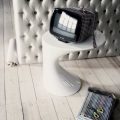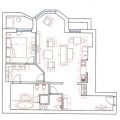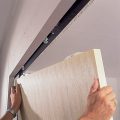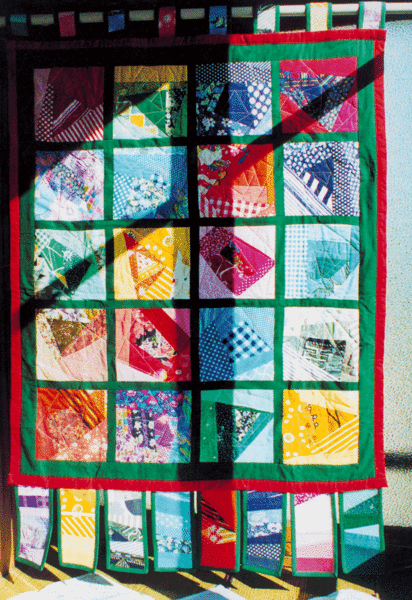 Wall panelSize: 84x102 cm, with hinges and patches - 84x125 cm; patchwork block size - 16x16 cm. You will need:
Wall panelSize: 84x102 cm, with hinges and patches - 84x125 cm; patchwork block size - 16x16 cm. You will need:
- scraps of fabrics of various colors;
- A - green calico, 50 cm with a width of 150 cm;
- B - calico red, 50 cm wide, 150 cm;
- B - fabric for the back side, 90 cm with a width of 110 cm;
- synthetic padding for lining, 90 cm with a width of 140 cm.
Technique: patchwork.
Description of work
Before work, soak all fabrics, dry, iron. Sort the patches by colors and shades. CuttingPatchwork part of the panel from fabric A:
- 15 short connecting strips measuring 18x4 cm,
- 4 long connecting strips measuring 72x4 cm,
- 2 strips of border measuring 72x7 cm,
- 2 long strips of border measuring 100x7 cm;
from fabric B:
- 2 strips of edging measuring 85x9 cm,
- 2 strips of edging size 105x9 cm
Pats
- from fabric B: 8 rectangles measuring 9.5 x 19 cm.
- from fabric A: 8 strips for edging 60x2 cm.
Loops
- from fabric B: 8 strips of size 5x19 cm.
- from fabric A: 16 strips for fringing in the size of 19x2 cm.
Sewing allowances = 1 cm. Sewing patchwork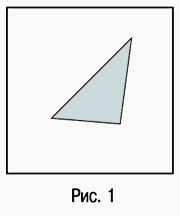 Wall panels do it yourself
Wall panels do it yourself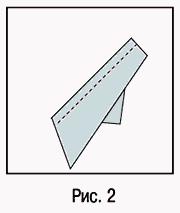
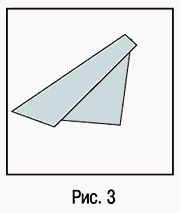
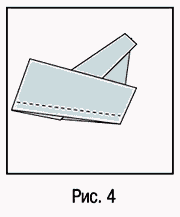
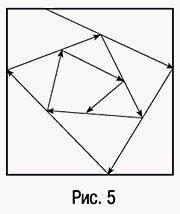
Prepare a template - a square with a side18 cm of thick paper or cardboard. For each block, select the central piece of the most saturated color, give it the desired shape - it can be a triangle, rectangle or something else (Fig. 1).
Then sew the next patch to one side of the central piece (Fig. 2), turn it to the front side and iron it (Fig. 3).
If necessary, trim the edges of the shred. Then stitch the next piece to the resulting figure (fig. 4), turn it to the front side, press it, etc.
The process of sewing a patchwork block consists ofsequentially stitching the central patch with other patches, with the central patch being the most saturated in color, and the block becoming lighter towards the edges. During the work, it is necessary to compare the block being sewn with the template, and when it reaches the required dimensions, align the edges of the block according to the template, i.e. up to dimensions of 18x18 cm.
Using the described technology, sew 20 patchwork blocksdifferent shades, arrange them on a large surface and rearrange in color, selecting the most successful color combinations, until the composition seems harmonious.
Sew patchwork blocks into one piece according todiagram 19: first, sew 4 blocks with 3 short connecting strips into one piece - you will get 5 such pieces in total, and then sew these pieces with 4 long connecting strips (when sewing, iron the seam allowances onto the connecting strips). Finally, sew 7 cm wide edging strips to the resulting patchwork piece: first short horizontal ones, then long vertical ones.
Сборка и окантовка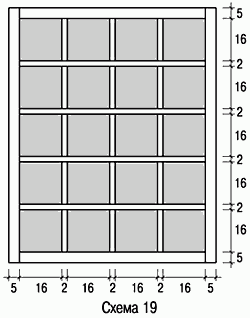 Scheme 19
Scheme 19
On a flat surface, lay out the fabric for the back side face down, place the synthetic padding on top, and place the patchwork fabric face up on top.
Sweep all 3 layers with long stitches "forward needle" AB from the center in both directions every 10 cm.
Then quilt each block separately on the machine:starting from one side of the block, move to the adjacent one, and pushing off from it - to the next (according to the spiral principle). The asymmetry of the stitch will only emphasize your "crazy patch" (Fig. 5).
Fold the edging strips in half lengthwise, with the wrong side facing inward, and iron the folds.
Place the vertical strip onto the patchwork piece, aligning the open edges, and stitch.
Measure a distance from the seam equal to the width of the piping (in our case 2 cm), and cut off the excess padding polyester and lining.
Unscrew the strip on the wrong side, tackand on the front side to lay the line at a distance of 1 mm from the edge of the strip. Similarly, stitch the other edging stripes. At the same time, attaching the upper and lower edging strips, simultaneously stitch the staves and folded loops in half. To this end, you need to tackle them to the wrong side of the product before performing the second line on the border strip and stitch it in the process of making this line.
Pats: stitch strips (not necessarily the correct form) into one part and align the edges of the part to a rectangle of 9.5x19 cm. Fold the back part with the patchwork detail (right sides out) and join along the edge with machine stitching. Open slices with a bake width of 0.5 cm.
Loops: stitch strips in one part and align the edges of the part to the size of 9.5x19 cm. Fold the part for the reverse side with the patchwork part (with the front side facing out) and join along the edge with machine stitching. To edge over the long edges of the loops with a bake.
Comments
comments
 Wall panelSize: 84x102 cm, with hinges and patches - 84x125 cm; patchwork block size - 16x16 cm. You will need:
Wall panelSize: 84x102 cm, with hinges and patches - 84x125 cm; patchwork block size - 16x16 cm. You will need: Wall panels do it yourself
Wall panels do it yourself



 Scheme 19
Scheme 19




